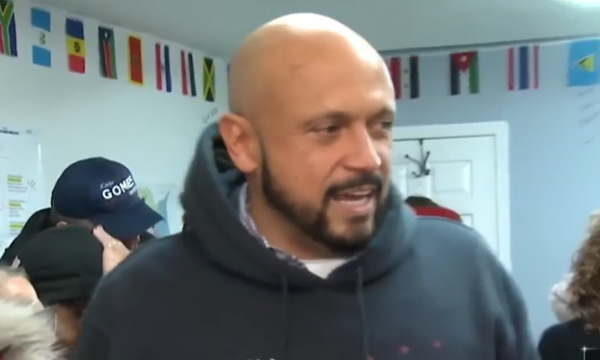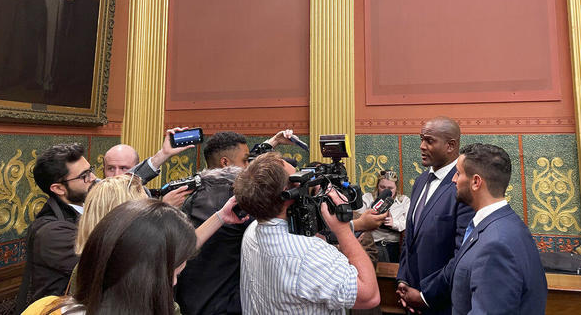High Turnout Marks 2018 Primaries, Raises Expectations for November
A clear sign that voters are engaged in 2018 has been the high turnout in party primaries across the nation.
In almost every case, voter turnout this summer has exceeded that in the 2014 midterm primaries – in some cases coming close to matching that of the presidential primaries of 2016. Such high levels of voter turnout indicate that both Democratic and Republican voters are highly mobilized in the run-up to this November’s midterm elections.
Florida
The Sunshine State this year surpassed its 2014 primary turnout rate by 1.3 million votes, a remarkable 57% increase over the last midterm primary. On the left, Democrats saw their overall margin increase from 830,000 votes cast in 2014 to just over 1.5 million this time around. This may owe in part to a more competitive primary for governor, one in which Tallahassee Mayor Andrew Gillum prevailed with 34.3% of the vote over former congresswoman Gwen Graham (31.3%) and former Miami Beach mayor Philip Levine (20.3%). By contrast, former Governor Charlie Crist was the only serious contender on the ballot in 2014.
On the GOP side, 1.6 million ballots were cast in the party primary between the Trump-backed Cong. Ron DeSantis and Agriculture Commissioner Adam Putnam. This total represented a 60% increase over 2014, when Gov. Rick Scott was the only serious candidate on the Republican ballot. DeSantis won this year’s primary with 56.5% of the vote, over Putnam’s 36.5%.
In all, just over 3 million Floridians voted in this year’s primaries, an exceptionally high number for a midterm cycle. In a state where parties are evenly matched and margins of victory are often razor-thin, such high levels of enthusiasm underscore the importance of getting voters to the polls in November.
Delaware
Turnout really surged this year in Delaware, to 121,000, or 2½ times the 46,000 votes cast in 2014’s primaries. Democratic enthusiasm in this typically blue state was especially high, with 83,000 ballots cast in a Senate contest that pitted longtime senator and former governor Tom Carper against progressive challenger Kerri Harris. Those 83,000 voters represented nearly 90% of total Democratic turnout in the 2016 presidential primary contest.
GOP primary turnout also increased, from 24,000 in 2014 to nearly 38,000 this year. While smaller, this 58% increase shows the GOP base there is motivated in advance of this year’s midterm elections.
Massachusetts
Massachusetts too, saw high turnout in contested races. The competitive congressional district race between incumbent Michael Capuano and former Boston City Councilor Ayanna Pressley in MA-07 drew twice the turnout as in 2016, despite being scheduled immediately following the Labor Day holiday.
Massachusetts Republicans also proved eager to vote, despite the awkward scheduling of the primary. In the 2014 GOP gubernatorial primary, only 155,000 voters participated; this year that number jumped 75% to 271,000. Gov. Charlie Baker triumphed easily, although challenger Scott Lively’s 36% share indicated that the incumbent Republican governor has lost support from a sizable chunk of his party’s conservative base.
Michigan
Just over 2 million voters turned out in Michigan midterm primary, shattering records going back to 1978. Some precincts in the Detroit area even ran out of ballots, as voters turned out in numbers comparable to the presidential primaries of 2016. The Democrats doubled their turnout from the previous midterm cycle, going from roughly 513,000 voters in 2014 to 1.1 million this year, and they fell only 70,000 votes shy of matching their total turnout in 2016. The GOP also saw increase in voter turnout, though not to the same extent: roughly 985,000 voted this year, compared to 617,000 in 2014. Though remarkable, the GOP’s 59% increase did not come close to the 114% jump recorded by the Democrats.
Both parties’ primaries also featured contested races. On the left, former state senator Gretchen Whitmer won out over two candidates: Abdul El-Sayed, a progressive former director of Detroit’s health department, and businessman Shri Thanedar. For the GOP, Trump-backed Atty. Gen. Bill Schuette edged out Lt. Gov. Brian Calley, who was backed by current Michigan Governor Rick Snyder.
Implications for November
With the stage now set for most of country for the November general election, the focus now shifts from intraparty fights to red-vs.-blue matchups. The surviving candidates, as well as party leaders, campaign professionals and pundits – are now left to assess what such high levels of voter engagement are likely to mean in what are shaping up to be high-intensity midterm contests.


